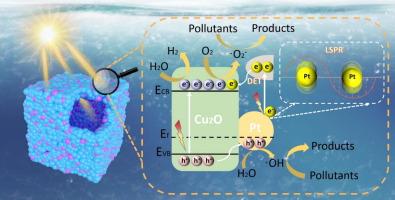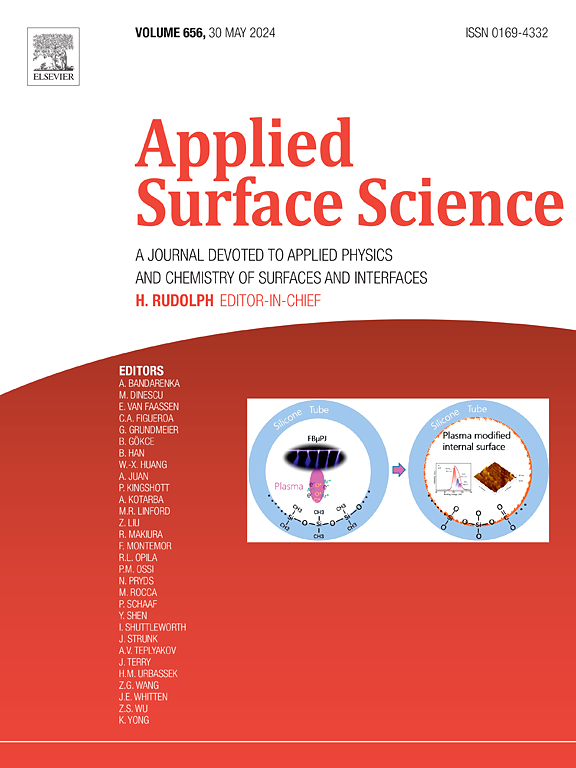Fabrication of plasmonic Hollow-Cu2O/Pt nanocages with inter-embedded nanoparticles subunits heterojunctions for efficient photocatalytic degradation and hydrogen evolution
IF 6.3
2区 材料科学
Q2 CHEMISTRY, PHYSICAL
引用次数: 0
Abstract
Semiconductor-based photocatalytic technology is considered as an effective and economical approach to solve the degradation of pollutants and the generation of new energy sources. However, suboptimal utilization of solar energy and fast combination of photocarriers greatly affects the catalytic performance. In this paper, plasmonic Hollow-Cu2O/Pt nanocages were synthesized by a template method, which have a shell layer with inter-embedded Cu2O and Pt nanoparticles subunits heterojunctions. Compared to cubic Cu2O and Cu2O/Pt, the nanocages exhibit much better photocatalytic properties. 5 mg of Hollow-Cu2O/Pt can achieve a degradation efficiency of 91.2 % for methyl orange (20 mg/L) under near-infrared light irradiation, and 96 % for methyl orange (50 mg/L) under visible light irradiation. Moreover, the hollow-Cu2O/Pt nanocages offer an enhanced degradation of antibiotics and a photocatalytic hydrogen production evolution, indicating that the nanocages have potential photocatalytic applications for the degradation of different pollutants and the hydrogen evolution. The superior photocatalytic performance is attributed to the synergistic effect of multiple advantages, including the larger specific surface area, the closer d-band center, the multiple diffuse reflection, the LSPR effect and the enhanced local electromagnetic field. This study offers a promising strategy to optimize integrated nanocage cooperated with subunit heterostructure and LSPR effect.

求助全文
约1分钟内获得全文
求助全文
来源期刊

Applied Surface Science
工程技术-材料科学:膜
CiteScore
12.50
自引率
7.50%
发文量
3393
审稿时长
67 days
期刊介绍:
Applied Surface Science covers topics contributing to a better understanding of surfaces, interfaces, nanostructures and their applications. The journal is concerned with scientific research on the atomic and molecular level of material properties determined with specific surface analytical techniques and/or computational methods, as well as the processing of such structures.
 求助内容:
求助内容: 应助结果提醒方式:
应助结果提醒方式:


